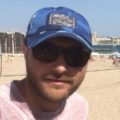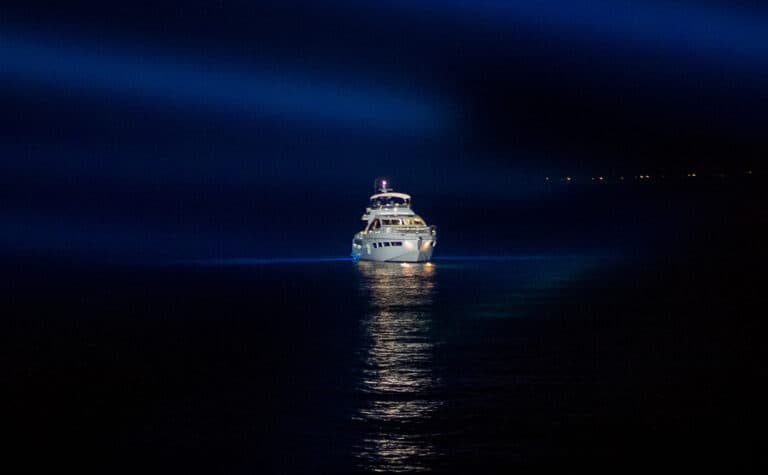We’ve recently covered Coast Guard fire extinguisher requirements. Today, our question to answer is as follows – where is the best place to store a fire extinguisher on a boat?
There are many sides to this question that boat owners may not even think about. Well, below, we’ll cover the key points pertaining to storing fire extinguisher on a boat.
- Where Should Fire Extinguishers Be Stored On A Boat
- Are There Any Regulations For Fire Extinguisher Location On Boats?
- Fire Extinguishers Should Be Located At A Safe Distance From High-Risk Items
- Fire Extinguishers Should Be Stored In A Visible And Accessible Location
- Keep In Mind The Class Of Your Fire Extinguisher
- Proper Mounting & Storage Of Fire Extinguishers
- How Many Fire Extinguishers Should You Have On A Boat?
- Do Fire Extinguishers Go Bad?
- Where is the Best Place to Store a Fire Extinguisher on a Boat – Final Words
Where Should Fire Extinguishers Be Stored On A Boat
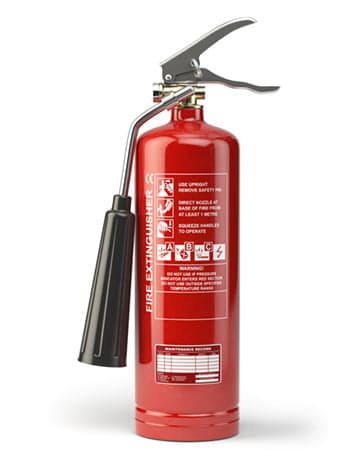
As a general rule, fire extinguishers should be stored near locations that have a high risk of fire. On boats, among these locations are:
- The kitchen.
- The engine compartment.
- The fuel storage compartment.
- Pretty much anywhere where there are flammable materials.
You should have a look around your boat and identify high-risk areas. Wherever you have fuel, combustible materials, or anything else that may catch fire, there should be a fire extinguisher.
With that said, for maximum safety and accessibility, there are a few things that you should keep in mind.
Are There Any Regulations For Fire Extinguisher Location On Boats?
The United States Coast Guard does not have specific requirements in terms of fire extinguisher storage location. The only thing storage-wise that they require is a mounting bracket.
If you are new to marine fire extinguishers, then also check out our post on fire extinguisher requirements on boats. There are plenty of must-to-know things there.
Fire Extinguishers Should Be Located At A Safe Distance From High-Risk Items
First and foremost, your fire extinguisher should be located at a safe distance from items that are likely to catch fire.
By that, we mean that you shouldn’t place your fire extinguisher right next to a fuel tank or right next to the engine. The fire extinguisher should be nearby, but not too close.
The reason for this is that you must be able to safely access your fire extinguisher in an emergency. If your fire extinguisher is stored right next to a burning fuel tank, then you will be risking your health and life to reach it.
In contrast, if the fire extinguisher was stored next to a nearby doorway, you would be able to safely access it, and you would have enough time to approach the fire hazard, engage the fire extinguisher, and tackle the fire.
Fire Extinguishers Should Be Stored In A Visible And Accessible Location
The second important tip to keep in mind is that fire extinguishers should be visible and accessible to everybody on board.
If you own the ship and are the one who has decided fire extinguisher location, then you will know precisely where to go in case of a fire. But what about passengers? If you do not perform a safety brief before the journey – which is a good idea, by the way – your companions may not be able to quickly locate your fire extinguishers.
With that in mind, the best place to store a fire extinguisher on a boat would be:
- Visible. Pick a location that is visible from anywhere in that compartment. That way, anyone will be able to locate a fire extinguisher by just having a look around.
- Accessible. People should not have to cover half of the ship to find a fire extinguisher.
Keep In Mind The Class Of Your Fire Extinguisher
Finally, when deciding the location of your fire extinguishers, you should also be mindful of the class of the fire extinguisher.
If you don’t quite understand what fire extinguisher classes are, then check out our guide on marine fire extinguisher requirements – we talk about classes a bit more there.
But in short, depending on their source, fires are classified into:
- Class A fires that are caused by combustible solids, such as wood or paper.
- Class B fires that are caused by combustible liquids, such as gasoline.
- Class C fires that are caused by electrical devices.
- Class D fires that involve metals.
- Class K fires that involve cooking oils or fat.
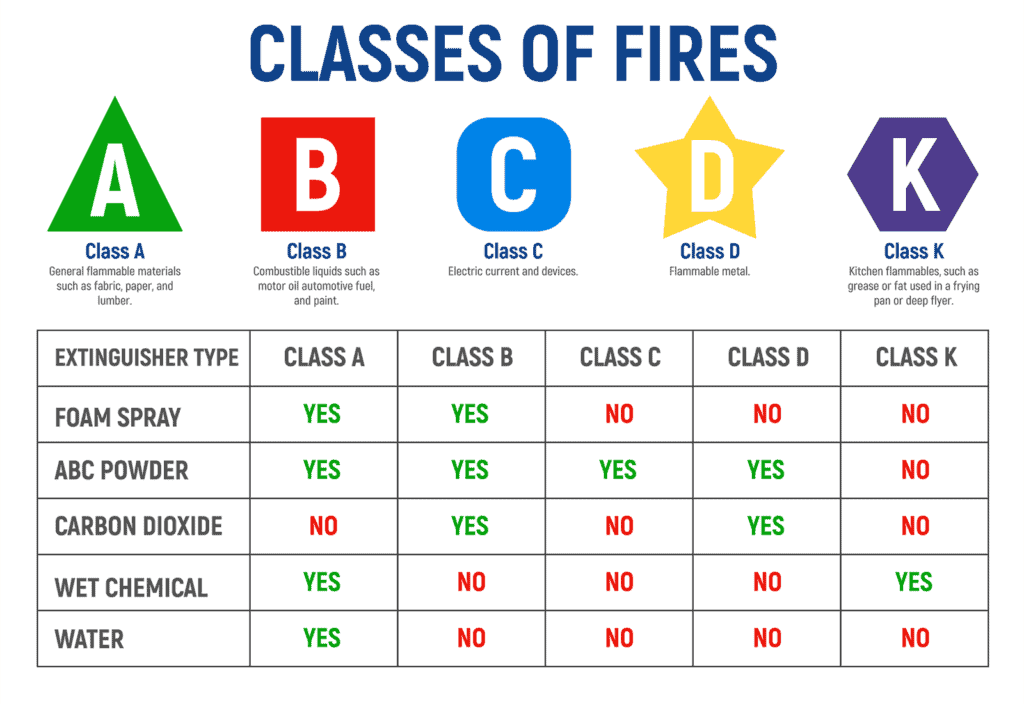
Each fire class must be extinguished by a corresponding fire extinguisher type. Class B fires should be treated with a type B fire extinguisher, for example. A fire extinguisher of one type is not suitable for a fire of another type.
Back to being mindful of fire extinguisher types. What we mean by this is that you should not store a type A fire extinguisher near fuel tanks. Fuel tanks would cause a class B fire, which cannot be extinguished by type A fire extinguishers.
With that in mind, identify fire hazards and make sure that there is an appropriate fire extinguisher nearby.
Furthermore, if there is a location with multiple fire hazards of different classes, then choose a fire extinguisher that can treat them. You can find AB, BC, ABC, and other types of fire extinguishers that can extinguish more than one fire type.
Proper Mounting & Storage Of Fire Extinguishers
In this section, we will have a look at a few important tips on proper fire extinguisher mounting and storage.
Use Mounting Brackets
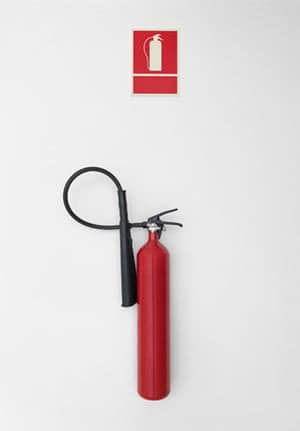
First off, you should absolutely use the mounting brackets that come with your fire extinguisher. There are three big reasons for this:
- Longevity. While you are cruising, your fire extinguisher will not be jumping around its storage cabinet, meaning that it’s unlikely to get damaged while in transit.
- Safety. A fire extinguisher that is not mounted is a safety hazard for those on board.
- Visibility & accessibility. Without a mounting bracket, you only have so many locations where fire extinguishers may be stored safely. And most of these locations aren’t even visible and accessible. With a mounting bracket, you may mount fire extinguishers in an optimal location.
Horizontal vs Upright Storage
Modern fire extinguishers can be stored either upright or horizontally. Since their contents are pressurized, they should not settle at the bottom of the fire extinguisher or leak.
Some older fire extinguishers may only be suitable for upright storage, however. You should check out the label of your fire extinguishers to figure out a proper way of storage for them.
Keep Larger And Heavier Fire Extinguishers Closer To The Floor
OSHA recommends storing heavy fire extinguishers closer to the floor. More precisely:
- The carrying handles of fire extinguishers lighter than 40 pounds should be mounted no higher than 5 feet from the floor.
- The carrying handles of fire extinguishers heavier than 40 pounds should be no 3.5 feet higher from the floor.
No matter the weight, fire extinguishers should also be mounted with their bottoms no less than 4 inches above the floor.
How Many Fire Extinguishers Should You Have On A Boat?
There are two sides to this question:
- Legality. How many fire extinguishers should you have on board to comply with the law?
- Safety. How many fire extinguishers should you have to keep your vessel safe?
When it comes to the law, here is how many fire extinguishers you must have:
| Boat length | Without a fixed fire suppression system | With an approved fixed fire suppression system |
|---|---|---|
| < 26 feet | 1 B-I | No fire extinguishers required |
| 26 to less than 40 feet | 2 B-I or 1 B-II | 1 B-I |
| 40 to 65 feet | 3 B-I or 1 B-II & 1 B-I | 2 B-I or 1 B-II |
So, you need just a couple of type B fire extinguishers.
However, how many fire extinguishers should you have for safety? Well, the more, the better.
For some perspective, OSHA recommends placing type B fire extinguishers at most 50 feet apart. This is a good guideline to follow to choose a proper number of fire extinguishers.
Another thing to keep in mind is the fire extinguisher type. The USGC only requires type B fire extinguishers because class B fires are the most common on boats. However, fires of other classes may happen too.
With that in mind, if you have combustible cargo that can cause fires of other classes, you should get yourself proper fire extinguishers.
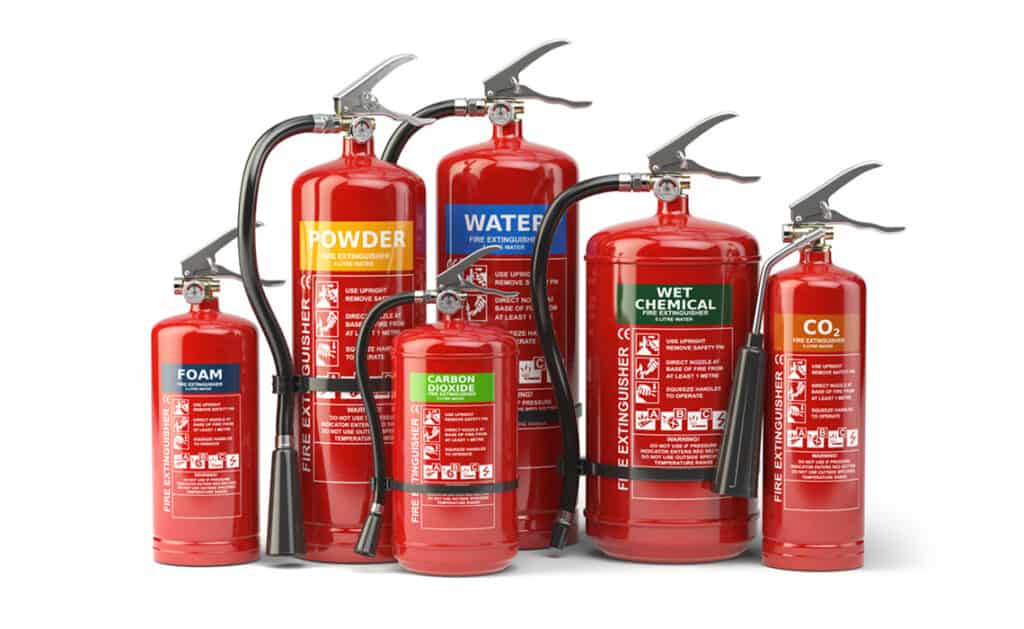
Do Fire Extinguishers Go Bad?
Since we are talking about storage, it’s also worth briefly covering fire extinguisher longevity. We’ve talked about this in our fire extinguisher requirements post, but we’ll recap everything here too since it’s relevant to the topic.
Fire extinguishers do not go bad if stored properly, but they can have “expiration dates” after which they should be replaced. Even past the expiration date, a fire extinguisher won’t necessarily go bad, but it’s a good idea not to keep decade-old fire extinguishers around.
You should also replace fire extinguishers if:
- They are used, damaged, corroded, or leaking.
- They need to be turned upside down to be used. These are older fire extinguishers that use soda acid, foam, water cartridge, or loaded stream cartridge agents.
- They use toxic agents such as carbon tetrachloride or chlorobromomethane.
- They have a shell of copper or brass joined by rivets or soft solder.
- Their manufacturer is out of business, in which case your fire extinguisher is probably very old.
Where is the Best Place to Store a Fire Extinguisher on a Boat – Final Words
So where is the best place to store a fire extinguisher on a boat? Well, the storage location should be:
- Visible.
- Safely accessible.
- Near the source of a possible fire.
Additionally, your fire extinguisher should be able to tackle fires that are likely where it is stored.

